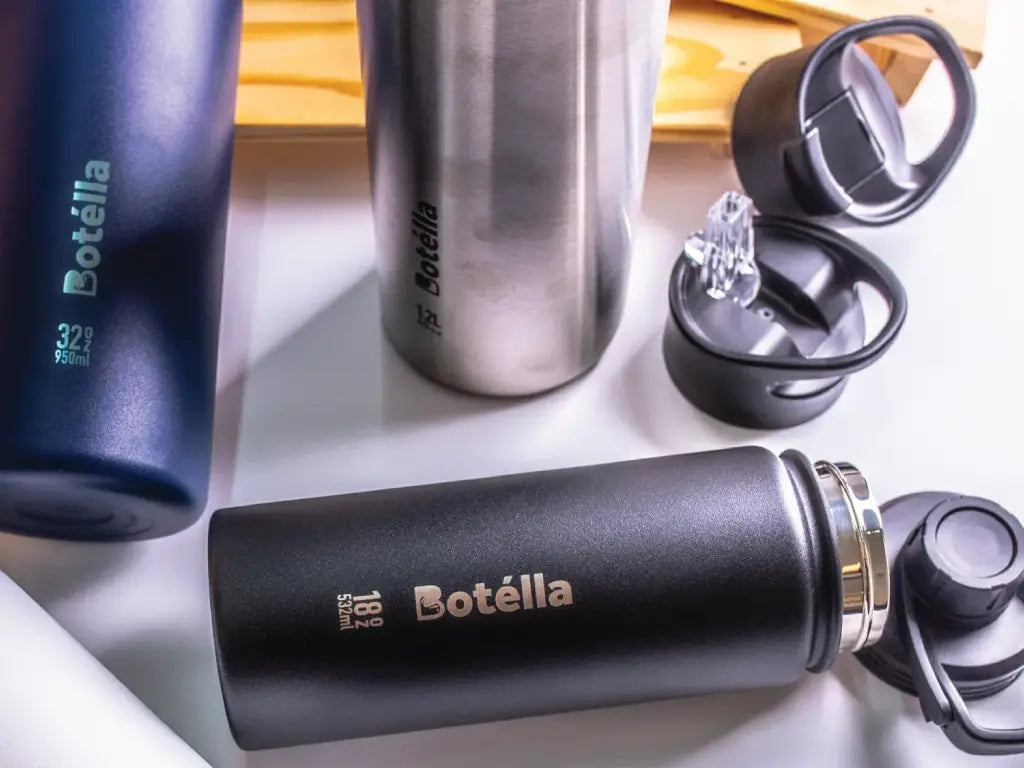In the age of eco-consciousness and health awareness, selecting the right beverage container transcends mere practicality; it becomes a testament to one's values and lifestyle. Two stalwart contenders in this arena are Stainless Steel and Glass Bottles. Each material offers a distinct set of advantages and considerations, presenting consumers with a nuanced decision-making process.
Durability and Longevity
Stainless steel emerges as a beacon of strength and resilience in the realm of beverage containers. Renowned for its durability, stainless steel bottles withstand the test of time, enduring rough handling and adverse conditions without faltering. The robust nature of stainless steel ensures longevity, making it an ideal companion for the rugged adventures of daily life. Additionally, stainless steel's resistance to corrosion and rust further cements its position as a durable and reliable choice for consumers seeking longevity in their beverage containers.
In contrast, glass bottles, while visually appealing, pale in comparison to stainless steel in terms of durability. Glass's inherent fragility renders it susceptible to cracks and breakage, especially under impact or mishandling. Despite efforts to reinforce glass bottles with thicker walls or protective sleeves, they remain inherently vulnerable, requiring delicate handling to prevent damage. While glass may offer aesthetic appeal, its fragility poses a practical limitation, particularly for individuals with active lifestyles or those seeking long-lasting beverage containers.

Environmental Impact: The Sustainability Perspective
The sustainability debate weighs heavily on the choice between stainless steel and glass bottles. Stainless steel emerges as a beacon of eco-friendliness, offering a solution with minimal environmental impact. Not only are stainless steel bottles recyclable, but they also boast a closed-loop recycling process, allowing the material to be repurposed endlessly without loss of quality. Furthermore, the manufacturing of stainless steel entails lower energy consumption compared to glass production, thereby reducing the carbon footprint associated with beverage container manufacturing. With stainless steel, consumers can sip with peace of mind, knowing their choice aligns with eco-conscious principles.
Glass bottles, while recyclable, present a more nuanced sustainability narrative. While glass can be recycled indefinitely without loss of quality, its fragility poses challenges in transportation and processing, leading to higher rates of breakage and energy consumption. Moreover, the production of glass bottles requires substantial energy input, particularly during the melting and shaping processes. While glass bottles offer a sustainable end-of-life solution, concerns linger regarding their environmental impact throughout the manufacturing and distribution process. As such, consumers must weigh the trade-offs between aesthetics and environmental considerations when choosing between stainless steel and glass bottles.

Hygiene and Safety: Prioritizing Consumer Wellness
In the realm of hygiene and safety, stainless steel bottles emerge as champions of cleanliness and purity. Their non-porous surface prevents bacterial growth, ensuring beverages remain uncontaminated and safe for consumption. Stainless steel's inert nature further enhances its safety profile, eliminating concerns about chemical leaching or flavor alteration. For consumers prioritizing wellness, stainless steel provides peace of mind, offering a reliable vessel for daily hydration without compromising on safety or hygiene standards.
Glass bottles, with their transparent allure, offer a window into beverage purity but raise concerns about chemical leaching and breakage-related hazards. While glass allows consumers to visually inspect contents for cleanliness, concerns persist regarding potential contaminants leaching into beverages, particularly with acidic or hot liquids. Additionally, glass's fragility poses safety risks, especially in environments prone to accidents or mishaps. While glass may offer aesthetic appeal, consumers must consider the trade-offs between transparency and safety when selecting their preferred beverage container.

Thermal Performance: Maintaining Optimal Temperatures
When it comes to thermal performance, stainless steel bottles reign supreme, offering unparalleled insulation capabilities. Stainless steel's ability to retain hot or cold temperatures for extended periods ensures beverages remain at optimal serving temperatures, regardless of external conditions. Whether enjoying a piping hot coffee on a chilly morning or quenching thirst with an ice-cold beverage on a scorching day, stainless steel delivers consistent temperature control, enhancing the drinking experience for consumers.
In contrast, glass bottles struggle to maintain thermal equilibrium due to their inherent conductivity. While suitable for short-term storage, glass fails to insulate beverages effectively, leading to rapid temperature fluctuations that may compromise taste and comfort. Consumers seeking reliable temperature retention may find stainless steel better suited to their needs, offering superior performance in preserving beverage temperatures over time. By prioritizing thermal performance, consumers can elevate their drinking experience with stainless steel bottles designed to keep beverages at their optimal serving temperatures for longer durations.
Aesthetic Appeal: Balancing Form and Function
In the realm of aesthetics, both stainless steel and glass bottles offer distinct visual allure, catering to diverse preferences and style sensibilities. Stainless steel bottles exude a sleek and modern aesthetic, characterized by clean lines and polished finishes. Available in an array of colors and designs, stainless steel bottles allow consumers to express their individuality while embracing a minimalist yet sophisticated look. Whether at the gym, office, or outdoor adventure, stainless steel bottles make a stylish statement while seamlessly integrating into various lifestyles.
Conversely, glass bottles evoke timeless elegance with their crystal-clear clarity and classic silhouette. The transparent nature of glass allows consumers to showcase the purity and vibrancy of their beverages, adding a touch of sophistication to any setting. From gourmet picnics to formal dinner parties, glass bottles elevate the drinking experience with their refined aesthetic and understated charm. While glass may lack the ruggedness of stainless steel, its visual appeal appeals to those who appreciate the beauty of simplicity and tradition.

Conclusion: Making an Informed Choice
In the ever-evolving landscape of beverage containers, the choice between stainless steel and glass bottles remains a matter of personal preference and lifestyle considerations. While stainless steel offers unrivaled durability, sustainability, and thermal performance, glass entices with its aesthetic charm and transparency. By weighing the factors of durability, environmental impact, hygiene, thermal performance, and aesthetic appeal, consumers can make informed decisions that align with their values and enhance their drinking experience. Whether opting for the rugged resilience of stainless steel or the timeless elegance of glass, choosing the right bottle material ensures that every sip is savored in style.

